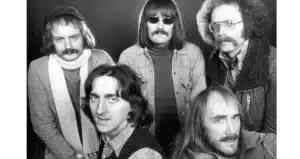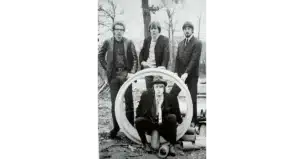National Health: The Last Great Voice of the Canterbury Scene
Formation and Background
National Health was a British progressive rock band formed in 1975, widely regarded as one of the final torchbearers of the Canterbury Scene. Emerging just as the golden era of progressive rock was winding down, National Health represented both a culmination and refinement of the musical ideas developed by earlier Canterbury bands like Soft Machine, Hatfield and the North, and Caravan.
The original lineup was a supergroup of sorts, bringing together key figures from the scene:
Dave Stewart – Keyboards (of Egg and Hatfield and the North)
Phil Miller – Guitar (of Matching Mole and Hatfield and the North)
Pip Pyle – Drums (of Gong and Hatfield and the North)
Neil Murray – Bass (later of Whitesnake and Black Sabbath)
Alan Gowen – Keyboards (of Gilgamesh)
Despite early instability in personnel, the band’s core became centered around Stewart, Miller, and Pyle, and later included John Greaves (bass, vocals) and guest appearances by Amanda Parsons and even Bill Bruford.
Musical Style
National Health took the hallmark characteristics of Canterbury music — whimsical melodies, complex jazz-rock structures, surreal humor, and classical influences — and pushed them into even more intricate and cerebral territory.
Their music blends:
Symphonic keyboard layers
Extended instrumental passages
Odd time signatures and sudden changes
Fusion-driven improvisation
Minimal vocals, emphasizing composition over lyrics
The result is music that is challenging, playful, and technically brilliant, appealing to fans of bands like Henry Cow, Frank Zappa, or Gentle Giant, while remaining firmly rooted in the Canterbury ethos of elegant absurdity.
Albums and Highlights
National Health (1978)
Their debut album is a masterpiece of instrumental progressive rock, featuring extended compositions like “Tenemos Roads” and “Borogoves (Excerpt)”. The tracks showcase tight ensemble playing and whimsical complexity. Amanda Parsons’ wordless vocals add a haunting and ethereal layer to the band’s already lush soundscape.
Of Queues and Cures (1978)
Often considered their finest work, this album is even denser and more dynamic. It contains pieces like “The Bryden Two-Step (For Amphibians)” and “Dreams Wide Awake”, blending jazz, classical structure, and experimental rock in a seamless, highly inventive way. It’s widely acclaimed as a Canterbury classic.
D.S. Al Coda (1982)
Released after the death of Alan Gowen, this album is a tribute to his compositions, recorded by members of National Health and Gilgamesh. It carries a more emotional, reflective tone, and while more subdued, it remains a beautiful, respectful farewell to one of the scene’s quiet geniuses.
Legacy and Influence
National Health marked the end of an era: they were too complex for punk audiences, too experimental for mainstream success, and yet too brilliant to be ignored. In retrospect, they are often cited as one of the last great Canterbury bands, whose recordings represent the high watermark of technical and compositional ambition in progressive rock.
Musicians and critics have praised their fearless complexity and artistic integrity, and their music continues to inspire lovers of avant-prog, fusion, and chamber rock. Although they never achieved widespread fame, their cult following remains strong, and their albums are often considered essential listening within progressive rock circles.
Interesting Facts
The band’s name was an ironic joke: “National Health” referred to the UK’s National Health Service and reflected their typical British wit.
Amanda Parsons, of The Northettes (Hatfield and the North), brought a rare, choral beauty to their music despite being a non-core member.
Alan Gowen passed away in 1981 from leukemia; D.S. al Coda was recorded to honor his memory.
Though their career was short-lived, their influence has grown significantly over time, especially with the resurgence of interest in Canterbury and avant-prog.




